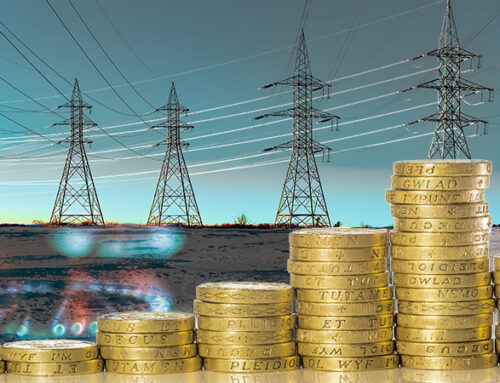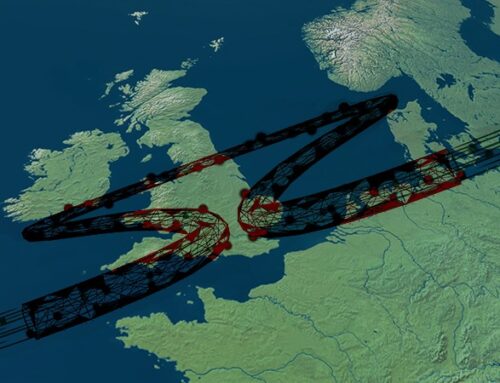While the world’s attention is on the current global gas shortage, a similar dynamic is playing out in the coal markets, with coal shortages creating difficulties in the power sector, even in countries with significant domestic production.
Bergkamen A, a 715 MW coal power station in western Germany, closed this week after running short of coal. Typically the plant is re-stocked via river barge deliveries, but there have been availability problems with both the coal and the barges. Unlike other coal power stations, Bergkamen is not connected to the rail network.
Hard coal for delivery in northern European during 2022 is trading at US$ 164 /MT, its highest levels since September 2008.
“We are short of hard coal. There is a strong demand for coal per se and secondly, there is a strong demand for transport by barge. And since Bergkamen has no rail connection, there are no logistical alternatives available here. We are dealing with a double bottleneck – this is not a specific problem for Steag but a common problem for nearly all owners of hard coal-based power plants these days,”
– Daniel Muhlenfeld, a Steag spokesman
These difficulties mirror the situation in China where the authorities are now taking any means necessary to secure energy supplies into the winter.
A period of low wind output across Europe in September due to still weather conditions has seen an increased use of coal to combat high gas prices, with coal generation now being significantly cheaper than gas generation despite higher coal and carbon prices. This has depleted coal stocks across the region.

Coal shortages are now occurring around the world. Indian utilities are struggling to secure new coal supplies as inventories hit critically low levels with 16 of India’s 135 coal-fired power plants having completely run out of coal at the end of September according to the Central Electricity Authority. More than half of the country’s coal generators had stocks that would last fewer than three days, and over 80% had less than a week’s inventories remaining. Coal accounts for over 70% of India’s electricity production, and the country is the world’s second largest importer, consumer and producer of coal, buying primarily from Indonesia, Australia and South Africa.
The causes of the coal shortages echo those in the gas markets: demand recovering from the pandemic at a much faster rate than production. Shortages in India are exacerbated by high global prices making imports less affordable, and heavy monsoon rains which have hampered domestic production. Another problem that has echoes elsewhere is the existence of regulated power prices and their interaction with market prices.
Power prices in India are set by each state individually and are among the lowest in the world with state-run distribution companies absorbing higher input costs to keep prices steady. The result is that many are now deeply in debt and the sector has cumulative liabilities running into billions of dollars. The resulting financial distress means the distribution companies often delay payments to power producers, affecting generator cash flows and disincentivising investment in the generation capacity. On top of this, generators are often locked in to long-term agreements with distribution utilities limiting their ability to pass on higher input costs.
“It is the perfect storm, prices are galloping due to China’s heatwave, shortages with Coal India and power plants, high freight rates, increased appetite in the rest of Asia, tightness due to Indonesian rains, Hurricane Ida in the US, and in general a supply crunch,”
– Puneet Gupta, founder of Indian coal marketplace Coalshastra
A similar story can be seen in the US where the Energy Information Administration recently said it expects coal demand from the power sector to increase by 100 million tons in 2021 and export demand to rise by 21 million tons compared to 2020, but that constraints in capacity and transportation are limiting the ability of producers to meet demand.
Mines have struggled to ramp up production for a number of reasons including limited access to capital, labour shortages, the time it takes to increase output, and uncertainty over how long this higher demand will last. Long-term contracts with electricity generators are rare, and mines are reluctant to invest in increased production if there is a risk of not finding buyers for the coal later on, particularly if gas prices decline.
Coal mining capacity has fallen in recent years, and with environmental policies driving coal out of the electricity markets in the longer-term, there has been little incentive to invest in production flexibility.
It turns out that the coal producers are very much limited in what they can do. There is no extra coal out there to get…There’s literally no more coal to squeeze out of the system,”
– Matt Preston, research director for North American coal markets at Wood Mackenzie
The expectation is that coal markets will return to balance when demand falls as a result of recovering gas market dynamics rather than due to increased coal supplies.
Lessons from the Energiewende
I have written before about the high costs of Germany’s energy transition, where the snap decision to exit nuclear in the wake of the Fukushima disaster saw German emissions rising in the early part of the last decade even while it built out significant renewable generation capacity. Now, in addition to its nuclear exit, Germany is potentially going to need to accelerate its exit from coal-fired generation if it is to meet its 2030 emissions targets.
The current legislated coal closure path would see over 30 GW of coal closing leaving 17 GW in 2030, but in order to comply with new emissions targets, the entire fleet would need to be closed by that date, according to analysis by Timera Energy.
To replace its coal and nuclear capacity, Germany aims to significantly increase renewable capacity with almost 50 GW of new solar PV and 30 GW of wind by 2030.

While this might make sense when considering nameplate capacity, on a de-rated basis, problems emerge. Average load factors are around 20-25% for onshore wind and 10% for solar compared with 80-85% for coal and nuclear. In addition, coal and nuclear can be dispatched to provide flexibility to the power system in a way that intermittent renewable generation cannot.
 Closing coal by 2030 would lead to a 41 GW de-rated capacity deficit even if new renewables are built according to plan – this deficit does not include flexible capacity that is currently under construction such as new interconnector projects, demand response and storage, but even with the pipeline of committed projects a significant gap will remain.
Closing coal by 2030 would lead to a 41 GW de-rated capacity deficit even if new renewables are built according to plan – this deficit does not include flexible capacity that is currently under construction such as new interconnector projects, demand response and storage, but even with the pipeline of committed projects a significant gap will remain.
At the same time, peak demand will increase as Germany electrifies its heating and transport sectors along similar pathways to those proposed in the UK.
This means that Germany could be facing a capacity crunch in the second part of this decade that could undermine the stability of the system and send prices soaring.
While German carbon emissions have fallen sharply since 2016, Germans pay the highest electricity prices in the world. Electricity prices have more than doubled in the past 20 years, largely due to various taxes and charges which now account for more than two-thirds of the price paid by end users.
Although significant renewable capacity has been built, it still makes sup a small part of total energy consumption, and renewable generation is poorly integrated with an electricity system where the main demand sources are in the south of the country, far from the renewable capacity in the north.
German citizens seem content to pay high prices for their electricity, but are significantly more resistant to the large infrastructure projects such as improving the country’s transmission network which will be essential if those high prices are to deliver a stable as well as green energy system. How content they will be if alongside those high prices the electricity system becomes less stable as firm capacity is replaced with intermittent capacity remains to be seen.
.
Against the backdrop of rising gas prices, and low wind generation, British coal-fired power stations have been filling the gap, and there is talk of a new deep coal mine in Cumbria. With the likely early closure of Britain’s aging nuclear fleet, keeping its remaining coal-fired power stations open would seem to be a good hedge against the looming capacity crunch. Assuming coal is available, that is.






Good point about coal production being limited to what current facilities can deliver and why is any body going to invest in new facilities given the drive to eliminate it from electricity production as fast as possible. The irony of course is at these elevated levels alot of production could be bought on stream but will it be? Also gas and oil prices continuing to make new highs along with many other agricultural commodities too so a severe bout of inflation looks baked in now.
I completely agree – it’s just about impossible to avoid the infaltionary pressures now. The trick will be to try to wear the pain – once gas markets re-balance next year we need to not have excess wage inflation on our hands.
Hi Kathryn……interesting in depth posting on global coal shortages.
Here in the UK there remains vast reserves of high grade hard coal deep below ground.
Little doubt delaying the closure of coal fired power stations would ease the situation.
However I do wonder whether the infrastructure remains to deliver coal overground to the furnaces.
Or has the withdrawal gone too far to recover, albeit temporarily ?
You include the point that UK coal extraction is deep mined.
As always below ground mechanised cutting machines do a great job.
But as a miner once said, if the coal seams are uniform, okay, otherwise it’s back to hand dig.
And believe me we do a lot of hand digging.
I question whether there is sufficient willing & experienced labour out there for such hazardous work these days.
As always everything has a price.
Barry Wright Lancashire.
I think this is true everywhere – well the part about extracting coal rather than mine depth. There are good coal reserves globally but environmental policies mean that there has been little new investment which certainly impedes the kind of flexible production we need now.
I’d be interested to know how our power station coal socks are looking…with the exception of RATS I would think they were being run down, so we may not be in the best place for relying on coal as a back up. If any readers have an information on this they can share it would be welcome (sadly I don’t live near any of the power stations in question!)
Looking at schedules on Real Time Trains Ratcliffe has three coal trains scheduled today had three yesterday, Drax has two schedules in from Tyne coal import but could be pellets but they generally come from Liverpool. W. Burton hasn’t had any trains over last 7 days (this is the furthest the public dataset is available). As to how much coal they have on hand I don’t know either as im in sunny Surrey.
I would suggest that given W. Burton is in rundown they may not be actively restocking although if they are its going to cost them with coal up again to just shy $270/T.
Call that £200/tonne, or ~£85/MWhe plus £65/tonne CO2 for UKA and they can hedge a fat margin on the power markets, still at £260+/MWh after today for baseload. As they are likely to be called for peakload, they could lock in even more – £350/MWh for November. Coal ended down $50/tonne in forward months in sympathy with lower gas prices. The risk is in not getting called to generate because Kwarteng is too determined to minimise coal, whatever it costs to do so.
They didn’t put much coal on last night despite wind being down preferred to burn through our gas reserves instead. As you say wouldn’t look good coming up on COP26 and i bet NG have been told to keep coal offline whilst that’s going on so it better not get too cold!!